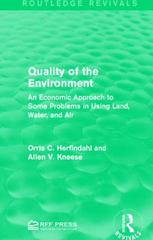Question
Suppose Smith is considering buying theft insurance for a car. Before he buys insurance, his wealth is 0 if there is a theft, and the
Suppose Smith is considering buying theft insurance for a car. Before he buys insurance, his wealth is 0 if there is a theft, and the value of the car, i.e., 12, otherwise. If Smith is careful where he parks, a theft occurs with probability 0.5. However, if he is careless, the probability rises to 0.75. Smith is risk averse and, other things equal, he has a mild preference to be careless, a preference worth only some small amount (close to zero) >0 to him. The insurance company is risk neutral, and the market is competitive. The insurance company offers a contract C=(x,y) , in which Smith pays premium x and receives compensation y if there is a theft.
(a)Derive the equilibrium contract C=(x,y) when the insurance company can observe whether Smith has been careful or careless. Illustrate using a state-space diagram. [15 marks]
(b) Suppose that the company cannot observe Smith's action (i.e., care is observable only to Smith). Determine graphically the equilibrium contract C=(x,y) under asymmetric information. Explain in a diagram the trade-off between efficient risk-sharing and incentives. [20 marks]
Step by Step Solution
There are 3 Steps involved in it
Step: 1

Get Instant Access to Expert-Tailored Solutions
See step-by-step solutions with expert insights and AI powered tools for academic success
Step: 2

Step: 3

Ace Your Homework with AI
Get the answers you need in no time with our AI-driven, step-by-step assistance
Get Started


